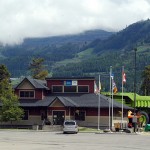Home »

New voice technology supports doctors’ reporting to improve patient care
Interior Health is expanding its use of voice recognition technology for physician reports at its hospitals. The new software translates spoken words into text, and will result in both cost savings and quicker report turnaround times.
“This technology will allow Interior Health to meet the ever increasing demand for transcription services, while taking advantage of technology that will result in improved turnaround time for vital patient care information,” says Interior Health board chair Norman Embree.
Voice recognition technology, also known as ‘automatic speech recognition,’ ‘ASR,’ ‘computer speech recognition,’ ‘speech to text,’ or just STT, allows patient information to be available at different points of care more quickly and efficiently. This is particularly important in cases when time is of the essence and multiple care providers are involved, such as trauma patients or those who are critically ill.
“Our goal is to be both innovative and efficient in the delivery of high quality health care,” says Mal Griffin, Interior Health Chief Information Officer. “By introducing this technology across the health authority, we will achieve over one million dollars in savings and better turnaround time for vital physician reports.”
The process for physicians dictating notes remains unchanged — the improvements happen behind the scene. Traditionally, once a physician finishes dictating their notes an audio file is sent to a transcriptionist, who listens to the recording and types up the report. The turnaround time for this traditional transcription service varies from about 24 to 72 hours. With voice recognition technology that time is expected to improve by 30 percent.
A transcriptionist still reviews the automatically produced text file, edits it if required, and saves the document to the patient’s electronic medical record. Quality measures are built in and if required a transcriptionist will listen to the original audio file, transcribe and save the document. Through this editing process the “smart technology” learns to better recognize the particular physician’s voice and speech patterns.
“Many of our physicians have been asking for this technology. We expect the benefits will be significant,” says Dr. Michael Ertel, Medical Director for Emergency Services and Critical Care Transport Advisor for Interior Health. “For example, if a complicated trauma patient was seen and initially resuscitated at Kootenay Boundary Hospital, and then transferred to one of our tertiary care trauma centres, voice recognition would enable the original Emergency Department physician’s initial critical care summary to be available to the accepting trauma doctor much more quickly.”
Interior Health successfully implemented voice recognition technology to support physicians in Diagnostic Imaging in spring 2011.
Ground work to further expand the technology will commence this month and the software will be introduced at nine locations, starting in September. The locations include: Williams Lake (CMH); Kamloops (RIH); Trail (KBH); Nelson (KLH); Kelowna (KGH); Vernon (VJH); Salmon Arm (SLH); Penticton (PRH); and Cranbrook (EKH). Implementation across these sites to support the health authority should be complete by spring 2013.
Interior Health







